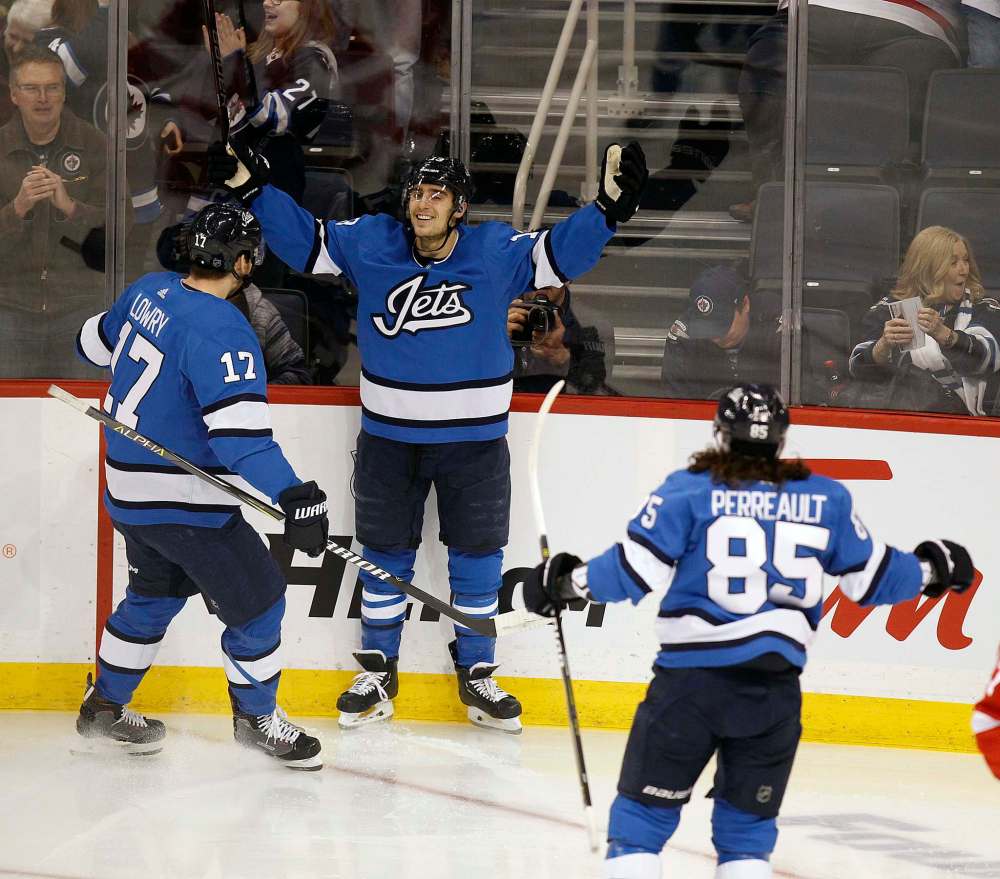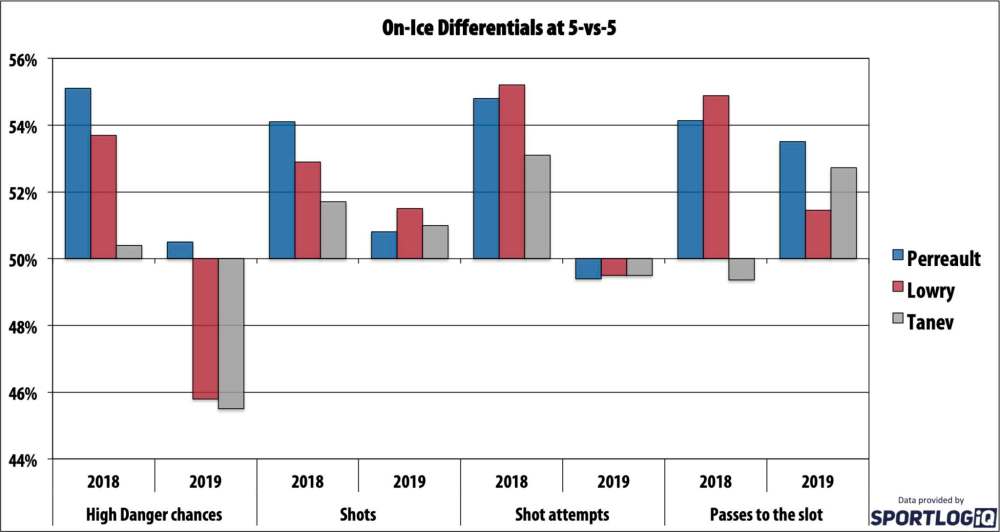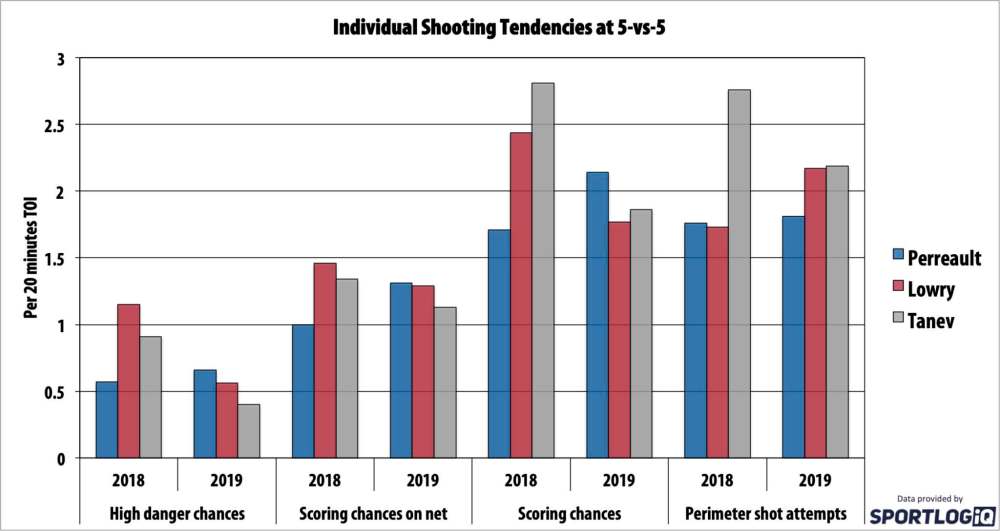Tanev producing, but Jets’ third line missing its dangerous edge
Advertisement
Read this article for free:
or
Already have an account? Log in here »
To continue reading, please subscribe:
Monthly Digital Subscription
$19 $0 for the first 4 weeks*
- Enjoy unlimited reading on winnipegfreepress.com
- Read the E-Edition, our digital replica newspaper
- Access News Break, our award-winning app
- Play interactive puzzles
*No charge for 4 weeks then billed as $19 every four weeks (new subscribers and qualified returning subscribers only). Cancel anytime.
Read unlimited articles for free today:
or
Already have an account? Log in here »
Hey there, time traveller!
This article was published 21/02/2019 (1889 days ago), so information in it may no longer be current.
Recently the Jets’ third line centred by Adam Lowry has gone a little cold on them, which probably wouldn’t be an issue if Patrik Laine wasn’t in the worst slump of his career, or Nikolaj Ehlers were healthy again or if the power play hadn’t seized up. But the culmination of these issues forces us to look at yet another area that doesn’t seem to be working at the moment.
A convenient place to do season splits is the new year, so we can take a look at the effectiveness of the players on the Jets’ third line in 2018 and 2019, respectively.
Since the calendar turned to 2019, Adam Lowry is last among the Jets’ forwards with just four points, while Mathieu Perreault is tied with Laine for second-to-last with six. Brandon Tanev has been surprisingly productive, with 10 points in 21 games, tied for fifth on the club.

Whatever’s impacting the production of the third line, Tanev appears to be mostly immune to it, or at least has broken out of it recently; busting a 10-game goal drought with two in his last three games.
To figure out what’s changed for them, let’s first look at how each player has performed in on-ice differentials in 2019 compared to 2018.
In 2018, Perreault and Lowry were the two Jets with the best high-danger scoring chance differentials on the team, and their puck possession dominance held through shots and shot attempts, while Tanev was closer to average in high-danger chances but strong on shots and shot attempts.
In 2019, all three players have seen their high-danger chance differentials tank precipitously, though Perreault has managed to stay in the positives, and all three players have been on the negative side of the coin in shot attempts, commonly referred to as Corsi.
Control of puck movement remains the area of the game where the Jets as a team exert the most control, and all three players fit into that mould in 2019, so there isn’t a problem with puck movement.
Differentials tell us that this line has been outplayed at five-on-five, but splitting things up into for and against, what’s apparent is that the line is playing a much lower-event game, meaning there are fewer shots and scoring chances for and against while they’re on the ice, but the bigger change has been to the shots the Jets are generating with this line skating.
For these three players, the number of high-danger scoring chances they’re producing have been cut by nearly 40 per cent at five-on-five, so individually, what has changed? We can look at their offensive tendencies to find out.
Through the first half of the season, Tanev and Lowry were two of the Jets’ best producers of high-danger chances, which really helped the depth lines consistently outplay opponents and make things easier on the top lines. Perreault is more of a playmaker than a shooter, but since the new year, he’s been getting more chances from in tight than either of his linemates, and more scoring chances overall.
Lowry and Tanev in 2018 both bordered on getting more shots on net from the high-danger area than from the perimeter, but of late both players are shooting from further and further out.
Somewhere along the line, two players who thrive on grinding it out and going to the tough areas started to play more and more on the perimeter, and the playmaker tasked with getting the puck to them in those dangerous areas ended up needing to go there himself in order to get some level of scoring going.
Clearly, Tanev has been able to thrive offensively despite this change, though in a sample as small as 21 games it could be more good fortune than good play, but Lowry has struggled.
The name of the game for Lowry and Tanev as a duo has always been high-quality puck retrievals, winning battles with strong forechecks, then cycling and grinding teams down until they can get the puck into a good area for a scoring chance. In the first half of the year Tanev led all Jets in scoring chances off the cycle with 1.43 every 20 minutes of ice time, and Lowry was fourth with 1.15. Since Jan. 1, Tanev is producing only 0.65 cycle chances per 20 minutes one the ice, less than half his previous mark, and Lowry isn’t much better, at 0.88.
It’s easy to say while sitting on the sidelines, but these two need to get back to playing their game.
Andrew Berkshire is a hockey writer specializing in data-driven analysis of the game.

Andrew Berkshire
Andrew Berkshire is a hockey writer specializing in data-driven analysis of the game.










